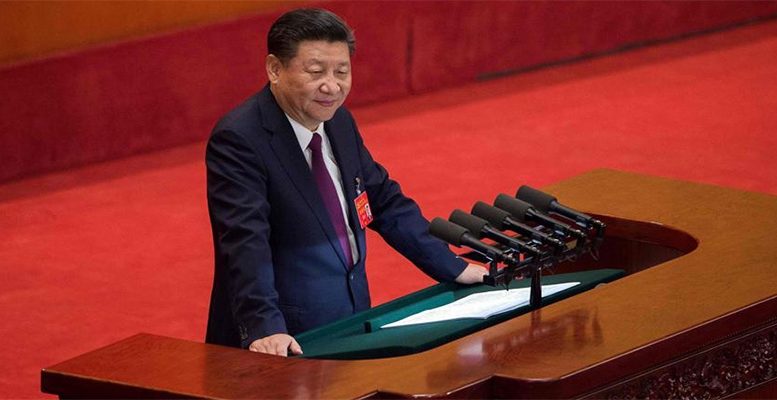Alicia García Herrero (Natixis) | After months of preparation and concerning sentiment stemming from a deteriorating external environment, Covid-related restrictions and the plummeting real estate sector, the Communist Party’s 20th Congress has started with President Xi Jinping delivering the work report.
Below are some key take-aways:
1. Dynamic zero Covid policies remain in place, sealed by the success in saving lives during the past few years. No clear exit strategy has been unveiled. However, the word “dynamic” opens the door to a more flexible/pragmatic reading of such policies, if conditions warrant.
2. China’s modernization is a key objective, which also has an important economic angle: achieving self-sufficiency for which moving up the technological ladder is key. This means that China will continue to use industrial policy to support key sectors but also acquire technology whenever and wherever possible. Against such background, dual circulation policy is mentioned in the report as yardstick of the importance of the domestic market. Instead, the concept of industrial policy is not mentioned in the speech, but it resonates when referring to state-sponsored innovation. The recent actions taking by the US to step up export controls on semiconductors into China supports the direction of travel taken by the Chinese government years ago, which is deepened further in President Xi’s speech. In other words, the threat of US containment, which is increasingly real, is read as justification of Xi Jinping’s inward-looking tone on China’s economy.
3. Economic growth is no longer the only key objective, per se, but only if “balanced”. In particular, while the China dream is maintained, in terms of doubling China’s income, the key is how China gets there. Balanced growth is essential, but the reading should not be the good old “rebalancing”, understood as consumption being the most important growth engine. Even the pursuit of “common prosperity” is less frequently mentioned in the President’s speech, which might have surprised many. By now, it should be clear that the objective is not to build a welfare state of the type of Europe to operationalize common prosperity, but rather to increase the role of the state/party to “regulate” wealth accumulation. The latter is indeed the key concept included in the speech. This should be a warning signal for the wealthy.
4. The equilibrium between market and state-driven economy is increasingly tilted versus the latter as the expression “market economy” is also less frequently present in the speech while the role of the state-driven innovation stands out prominently.
All in all, President Xi’s report kicking off China’s Party Congress is not only a continuation of China’s existing economic policies but a doubling-down on the direction of travel with two objectives: targeted self-reliance and national security.
An important corollary to this speech is whether the above goals and the instruments to achieve them are a free lunch. The rapid weakening of the RBM in the run-up to the Party Congress and the cautious market reaction to President Xi’s speech is signals of the potential costs associated to a more inward-looking China. Markets were also expecting a signal of zero covid policy in the future, but it is not given in the report. Still, China is a very large market, and the rest of the world is in a very difficult situation at the moment, saddled by inflation and, in the case of Europe, war and an energy crisis. Against such backdrop, international investors might be more accepting of China’s direction of travel for the lack of better options. However, President Xi’s report needs to be interpreted as a structural direction for China while inflation woos, and possibly even the war in Europe, might be temporary. Although the jury is still out on the relative strengths and weakness, what seems clear is that systemic competition between China and the West was here before the Party Congress and is here to stay.
China’s Party Congress: doubling down on the direction of travel
 China's President Xi Jinping gives a speech at the opening session of the Chinese Communist Party's
China's President Xi Jinping gives a speech at the opening session of the Chinese Communist Party's




